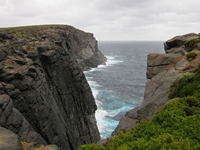
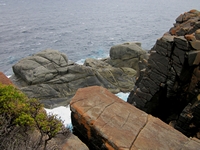
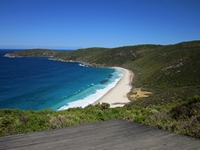
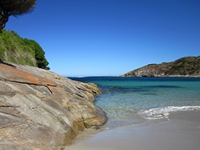
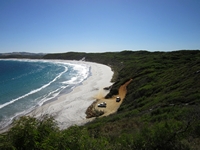
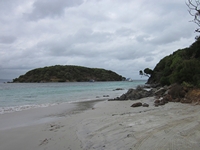
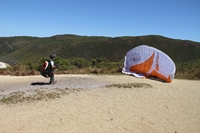
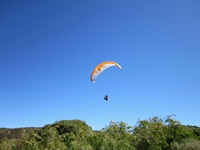
Denmark in the South West of WA; along to coast to Albany
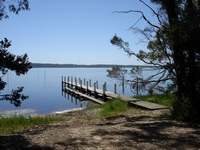
On the south side of
West Cape Howe is the southernmost part of
At Cosy Corner there are two separate areas; a small camp ground and a day only area.
Subsequent to our visit, the camping area
has been expanded.
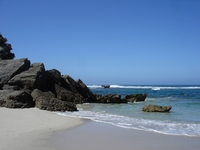
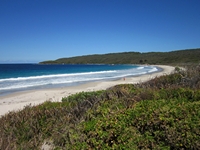
The beach at the Cosy Corner campground.
We continued exploring on towards
More about Albany and the surrounding coastline following.
Opened in 2001 the Verve Energy Albany Wind Farm consists of twelve turbines, with a feasibility study into adding a further six currently
being undertaken. Winds as low as seven kilometres per hour will turn the turbines, and at about 120 kilometres per hour the
turbines shut down to prevent damage. On average, there are only seven days per year when the wind is not strong enough to turn
the turbines.
The turbine towers are 65 metres tall with a 50 tonne generator on top driven by three 35 metre long blades. At present the
wind farm provides 50% of Albanys energy needs, and the proposed expansion would bring this up to 80%. Computers in the base
of the towers link the to the control centre in
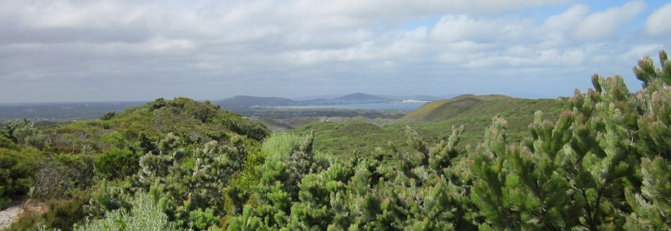
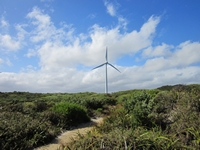
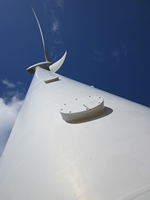
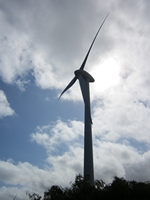
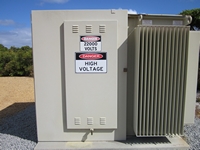
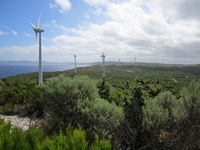
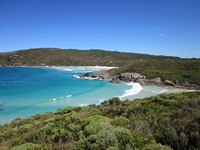
Australia So Much to See
We explore points along the coastline as we head east from
Shelley Beach now has road access and a small camping area at the beach. In a past era, a seasonal fishing village was at the
base of the sand cliff at Shelley Beach, with the only access via a very steep track down the dune which was lined with railway sleepers. There is little trace of this track remaining.
Coming in to land
Taking off
At the top of the cliff where we started our adventure, there is now a hang gliding take off board. Para-gliders floated high
in the sky.
Much of this section of the southern coastline has cliff faces and is accessed by keen fishermen.
A grey granite band through the black dolerite rocks.
One of our group, who had grown up in Albany, told us how they used to lower themselves down on ropes in the deep narrow chasm known
as The Chimney.